 Your new post is loading...
 Your new post is loading...
Presentation on fake news and website evaluation
How can you spot bad science reporting? Host Myles Bess helps you do just that by following this simple acronym: G - L - A - D.
MaryKay Magistad writes: "The Internet Archive's Wayback Machine is much beloved by investigative reporters and others, looking to find out what a webpage looked like at some point in the past, even if it's since disappeared. But the Internet Archive's work is much more ambitious than that. Founder Brewster Kahle says through scanning books and recording video feeds around the world, it aims to make all human knowledge universally available on a decentralized Web, and illiberal impulses among leaders in America and elsewhere are only 'putting a fire under our butts"'to do the work, swiftly and effectively."
If it’s on the Internet, it must be true! Watch this absolutely true video!
Rebecca Hersher writes: "The most emphatic statements on Roof's behalf came from defense attorney David Bruck. For weeks, the prosecution had presented evidence that Roof is a white supremacist whose violent racism drove him to kill black people. Bruck asked the jury to consider how the 22-year-old came to believe the things he did. As NPR reported: " 'There is hatred all right, and certainly racism, but it goes a lot further than that,' [Bruck] said." 'Every bit of motivation came from things he saw on the internet. That's it. ... 'He is simply regurgitating, in whole paragraphs, slogans and facts — bits and pieces of facts that he downloaded from the internet directly into his brain.' " Bruck was referring to Roof's assertion in his confession and in a manifesto that a Google search shaped his beliefs.
Donald Barclay writes: "Thirty or 40 years ago, a student writing a research paper on the topic of acid rain might have needed to decide whether an article from a scientific journal like Nature was a more appropriate source than an article from a popular magazine like Time. Today’s students, however, must know how to distinguish between articles published by genuine scholarly journals and those churned out by look-alike predatory and fake journals that falsely claim to be scholarly and peer-reviewed."
Mica Johnson writes: "Fake news has been all over the real news lately. From Mark Zuckerburg to Pizzagate, fake news is a huge problem, and it’s not going away on its own."
Kris Shaffer writes: "Help awaken your students to these new practices of digital deception, and help them face them effectively. They need this knowledge."
Joyce Valenza writes: "We were guaranteed a free press, We were not guaranteed a neutral or a true press. We can celebrate the journalistic freedom to publish without interference from the state. We can also celebrate our freedom to share multiple stories through multiple lenses. But it has always been up to the reader or viewer to make the reliability and credibility decisions."
Mercer Hall and Patricia Russac write: "The media literacy program at our school has been in place for over 16 years, and it starts with the first graders. We’re fortunate, too, that our students are permitted to use social media for learning; it allows us to update our program to include new media literacy skills as part of the learning process. In an age of media bombardment, learners must be permitted to practice skills not only for today’s world, but also for their future."
Frank W. Baker writes: "If I were addressing this problem in a 21st century classroom, I think I would start by asking students: what is news and who delivers it? Can your students distinguish between purposeful, legitimate news and the other stuff out there? This seems a good place to start."
Kevin Munger writes: "Overall, I found that it is possible to cause people to use less harassing language. This change seems to be most likely when both individuals share a social identity. Unsurprisingly, high status people are also more likely to cause a change."
David Tollerton writes: "Such statements [Muslims celebrated in New Jersey on 9/11, Mexico will willingly pay for a wall], and an array of others, were credible within the campaign’s own inner logic because the criteria for credibility did not include a basis in reality or even coherence." (Emphasis added)
|
"A recent study by North Carolina State University researchers finds that teaching critical thinking skills in a humanities course significantly reduces student beliefs in "pseudoscience" that is unsupported by facts."
Tom McFadden writes: "Health journalism is a mess, which provides a great opportunity for science teachers. For my middle school science class, specifically, it provided the context and motivation for everything we did from our body systems unit to our culminating public health project. Last summer, WNYC’s On the Media launched their “Skeptic’s Guide to Health News.” In the accompanying podcast episode, they tell the story of how a Ph.D-toting journalist laid a trap for health reporters with a study on chocolate and health risks. He did purposefully awful science (small sample size, mining a huge data set for correlations, etc.) in order to prove that he could find a journal to publish it and then garner worldwide media coverage. Soon, the Daily Mail was running the headline “Pass the Easter Egg! New study reveals that eating chocolate doesn’t affect your Body Mass Index!”
Samantha Lile writes: "Long ago, storytellers were wise old men and women who conveyed tales of the ancients and lessons learned through the ages. Later, stories were told by authors, playwrights and directors. But thanks to technology, anyone can now become a storyteller, a reporter and a publisher. Visual storytelling, in particular, has emerged as an important trend in web and graphic design, as well as other forms of marketing in the digital era – and for good reason. The visual cortex is the largest section of the human brain. According to a 2008 study, the average person remembers about 10 percent of what they hear when tested 72 hours later. But when visuals are added into the mix, the figure increases to 65 percent."
William Colglazier writes: "Asking simple and logical questions can destroy a lunch-time rumor, and it’s exactly what needs to be done when engaging with updates to your newsfeed on Facebook and Twitter. Rumors and lies are not a 21st century invention, and neither is fake news."
Amy B. Wang writes: "It’s no secret that teenagers love social media. Members of “Generation Z” can spend up to nine hours a day sharing photos on Instagram, consuming “content” on YouTube and talking to friends on Snapchat. (Just don’t ask them to get excited about Facebook.) But how much do these teens understand what they’ve agreed to give up when they start an account with those sites? Probably very little, according to a report released last week — and dense terms and conditions that are “impenetrable and largely ignored” are partly to blame."
From the website: "Hoaxy visualizes the spread of claims and related fact checking online. A claim may be a fake news article, hoax, rumor, conspiracy theory, satire, or even an accurate report. Anyone can use Hoaxy to explore how claims spread across social media."
Kalev Leetaru writes: "Technology alone cannot solve the fake news problem – only through teaching society to be data and information literate can we improve citizens’ ability to interpret the world around them."
Frank Baker writes: "From the various news stories and blog posts recently about “fake news,” I have culled the following recommendations and advice."
Laura Sydell writes: "A lot of fake and misleading news stories were shared across social media during the election. One that got a lot of traffic had this headline: "FBI Agent Suspected In Hillary Email Leaks Found Dead In Apparent Murder-Suicide." The story is completely false, but it was shared on Facebook over half a million times. We wondered who was behind that story and why it was written. It appeared on a site that had the look and feel of a local newspaper. Denverguardian.com even had the local weather. But it had only one news story — the fake one."
Sue Shellenbarger writes: "However, fewer schools now have librarians, who traditionally taught research skills. And media literacy has slipped to the margins in many classrooms, to make room for increased instruction in basic reading and math skills."
Sapna Maheshwari writes: "While some fake news is produced purposefully by teenagers in the Balkans or entrepreneurs in the United States seeking to make money from advertising, false information can also arise from misinformed social media posts by regular people that are seized on and spread through a hyperpartisan blogosphere. Here, The New York Times deconstructs how Mr. Tucker’s now-deleted declaration on Twitter the night after the election turned into a fake-news phenomenon. It is an example of how, in an ever-connected world where speed often takes precedence over truth, an observation by a private citizen can quickly become a talking point for a world leader, even as it is being proved false."
Sam Wineburg and Sarah McGrew write: "In search of answers, many of us ask our kids to "Google" something. These so-called digital natives, who've never known a world without screens, are the household's resident fact-checkers. If anyone can find the truth, we assume, they can. Don't be so sure. True, many of our kids can flit between Facebook and Twitter while uploading a selfie to Instagram and texting a friend. But when it comes to using the Internet to get to the bottom of things, Junior's no better than the rest of us. Often he's worse."
|
 Your new post is loading...
Your new post is loading...
 Your new post is loading...
Your new post is loading...












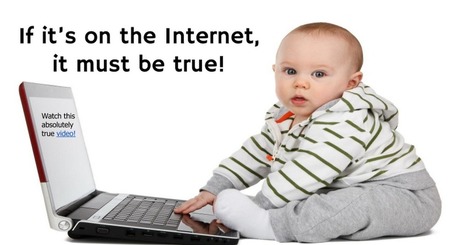









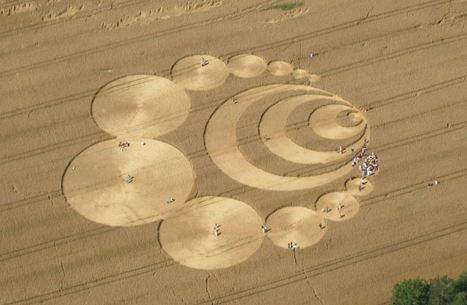

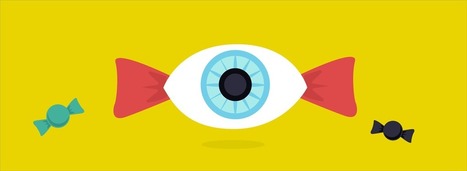
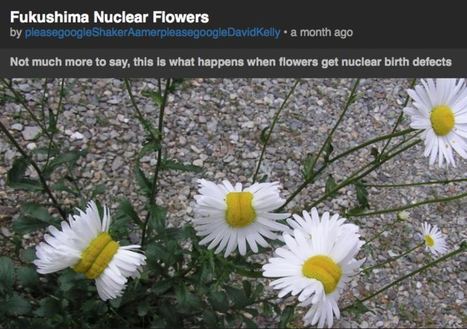

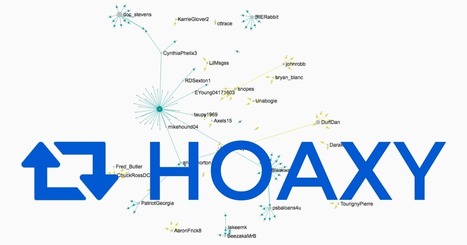

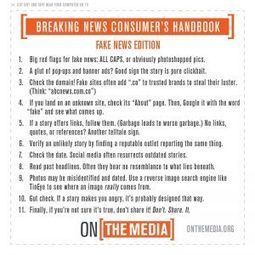









My 7th graders love this lesson. When they take notes, I tell them to leave space for a title, which they will come up with after the presentation. I'm constantly mixing things up on this lesson (just added the EasyBib Website Evaluator link after a co-worker in my district found it during a library conference this week.) Today one class was very focused on the fake news slide, so I had them come up with a clickbait headline for their notes. It certainly generated more conversation than when I asked for a title!
Most classes go to the computers after the presentation and look at Media Bias Fact Check to choose two news sources that are far right and far left, then compare stories on similar topics. If I have time, I let students work in pairs, so each student reads one article, takes notes and summarizes. I ask them to focus on word choice, since often the only difference in the articles are the adjectives used.
I added detailed notes at the bottom of the slides. Feel free to make a copy and use, share or modify.